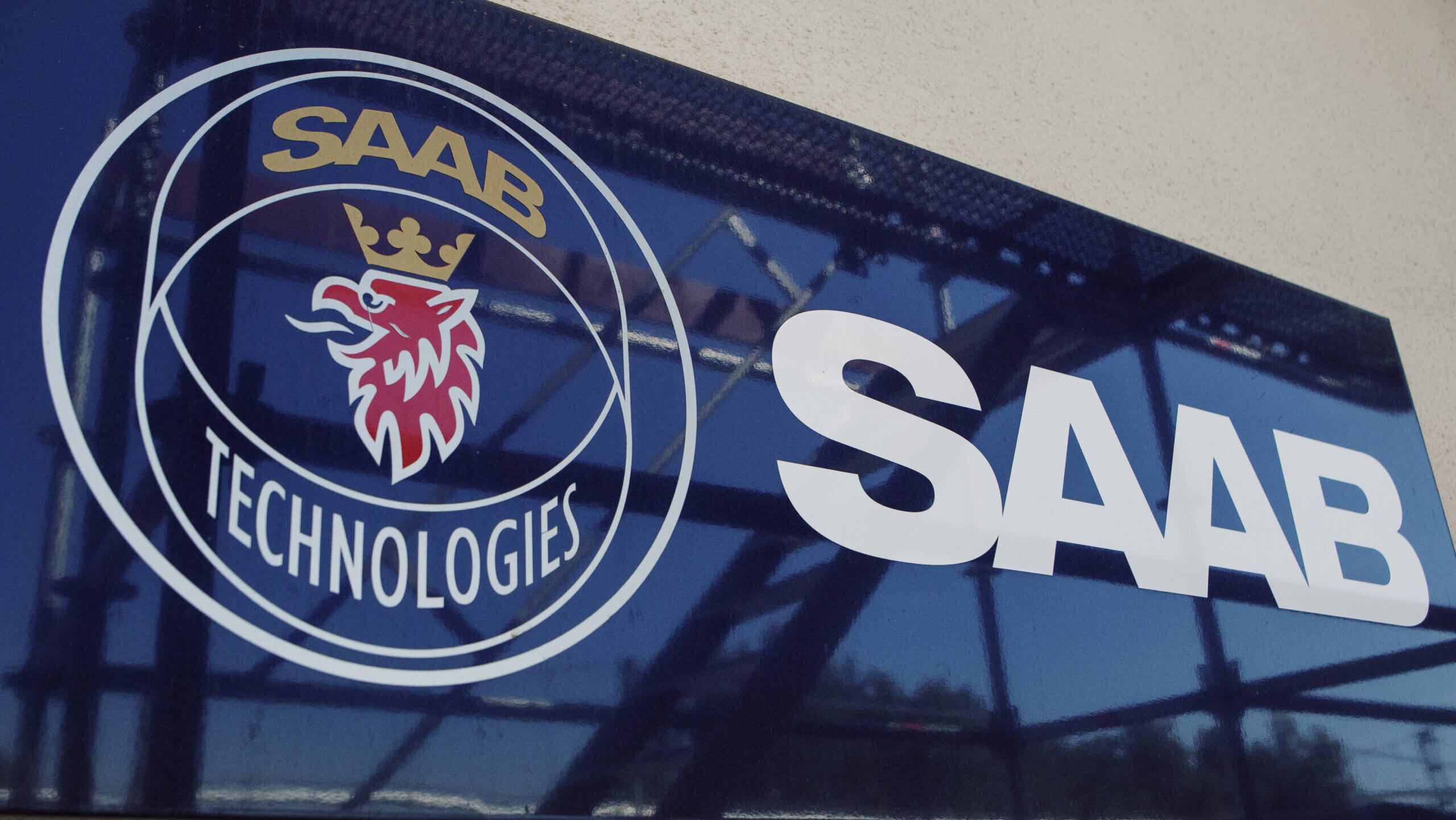
A logo of Saab AB at the Saab Dynamics AB facility in Karlskkoga, Sweden, on Monday, June, 12, 2023. (Erika Gerdemark/Bloomberg via Getty Images)
GLOBAL FORCE 2024 — Swedish manufacturer Saab announced today it will build a “new advanced manufacturing facility and center of innovation for weapon systems” in the US.
“The innovative new site will support the engineering and production of missile weapon systems for the U.S. military, such as components for the Ground-Launched Small Diameter Bomb (GLSDB) system, and close combat weapons,” the Stockholm-based firm said. “Final site selection and groundbreaking is planned for 2024, with production underway by 2026.”
Erik Smith, president and CEO of Saab’s US arm, said in a press release the factory is part of an effort to “extend our defense capabilities and ensure the safety and security of military personnel around the globe.”
“With capacity for advanced manufacturing and engineering, this new site will be a world-class asset to the American industrial base,” he said.
The GLSDB is a joint project between Saab and US-based Boeing. The bomb was originally designed as an air-launched munition, as it’s used by the US Air Force, but in 2015 the companies announced they’d successfully adapted it for ground launch.
“GLSDB allows the artillery system to reach targets from significantly longer distances, and engage hard-to-reach targets, while maintaining the Small Diameter Bomb’s flight maneuverability and accuracy,” Boeing said at the time.
The GLSDB returned to the headlines last February when the US Defense Department announced it was sending the weapon to Ukraine, months after critics, including in the pages of Breaking Defense, said the administration was unnecessarily dragging its feet.
Pentagon Press Secretary Gen. Pat Ryder said at the time that the bombs give Ukraine “a longer-range capability — long-range fires capability that will enable them, again, to conduct operations in defense of their country and to take back their sovereign territory in Russian-occupied areas.”
As for what the Ukrainians would use the bombs for, Ryder said, “Clearly that is their decision.”
“They are in the lead for those,” he said then. “So, I’m not going to talk about or speculate about potential future operations, but again, all along, we’ve been working with them to provide them with capabilities that will enable them to be effective on the battlefield.”
Before it could be sent to Ukraine, however, the US military needed to further test the ground-launched variant, so it wasn’t actually delivered to Kyiv until weeks ago, according to Politico.






















